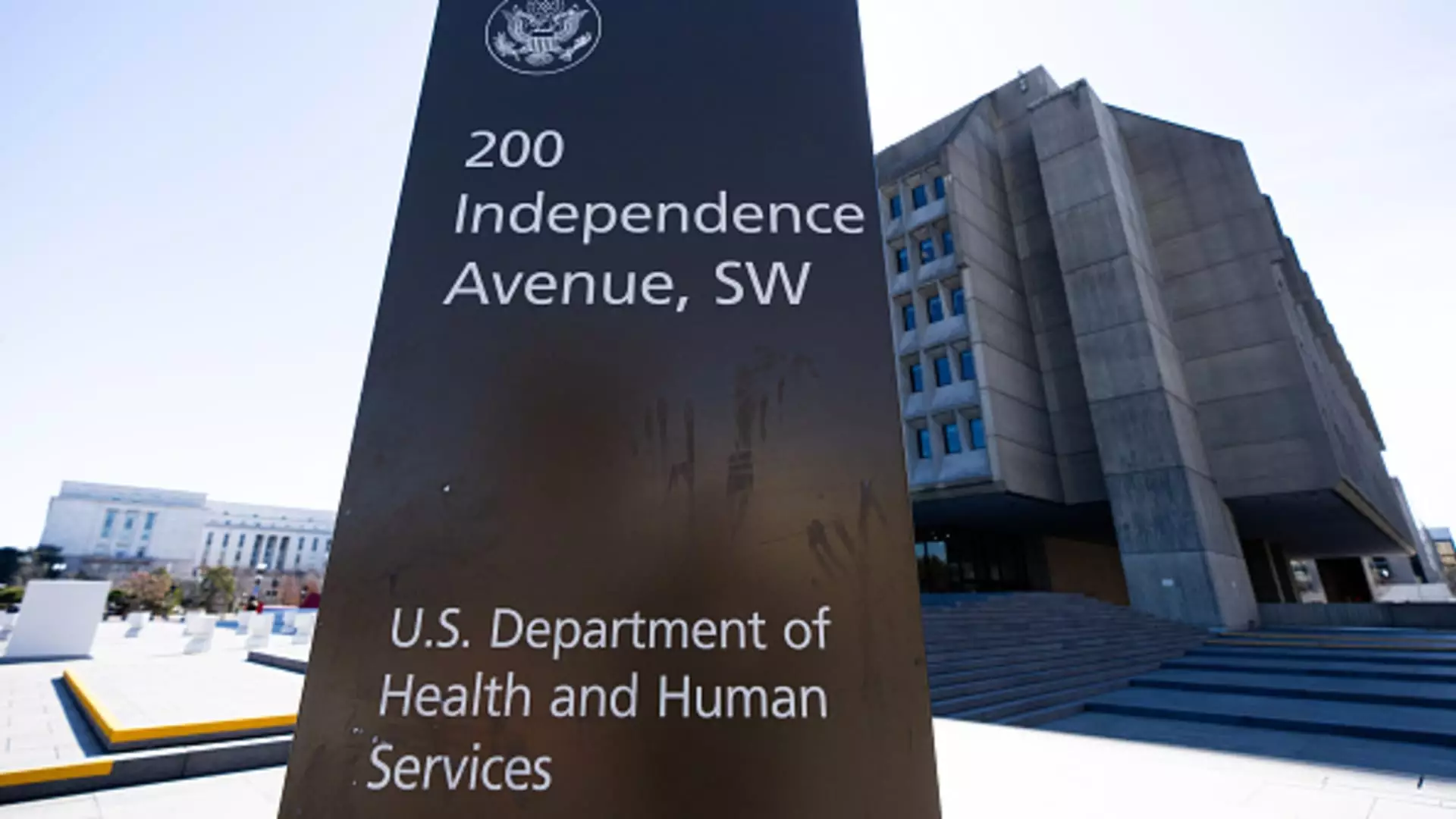In an audacious and alarming maneuver, the Department of Health and Human Services (HHS) is on the brink of a transformative shakeup that could see thousands of employees receiving layoff notices. With the potential loss of 10,000 positions, this move is not just about budget cuts; it’s a perilous gamble with the health and safety of Americans. President Trump’s decision to strip federal employees of their collective bargaining rights adds a dark layer to an already troubling scenario.
HHS, charged with pivotal responsibilities like monitoring health trends, disease outbreaks, and administering health insurance programs for millions, is being restructured under an unsettling new vision articulated by Health Secretary Robert F. Kennedy Jr. This expansive department, which oversees critical public health initiatives, is being catapulted into a state of uncertainty, where effective health governance is at serious risk. As officials move toward consolidating agencies under the proposed Administration for a Healthy America, the important question looms: at what cost?
Impact on Public Health and Safety
Democratic Sen. Patty Murray of Washington has voiced legitimate concerns that these layoffs could have dire consequences during emergencies, such as natural disasters or infectious disease outbreaks. The notice of potential layoffs comes just as the nation grapples with a concerning measles outbreak. The callousness of such drastic cuts brings to light the fundamental question of whether public health is being sacrificed on the altar of fiscal irresponsibility.
As if the layoffs themselves weren’t distressing enough, state and local health departments are feeling the heat as well. The recent withdrawal of more than $11 billion in COVID-19-related funds has sent ripples through local health systems, leading to swift job cuts. Lori Tremmel Freeman, the CEO of the National Association of County and City Health Officials, emphasizes that numerous jobs have already been eliminated, with many more on the chopping block. These cuts could have catastrophic ripple effects across the nation’s health infrastructure.
The Erosion of Workers’ Rights
The stripping away of collective bargaining rights serves to intensify the crisis within HHS. The recent executive order from President Trump that destroys these workers’ protections only compounds the already dire situation. It isn’t merely a procedural change; it’s a full-throttle attack on civil servants committed to public welfare. Politicians like Rep. Gerald Connolly and Rep. Bobby Scott have rightly condemned this erosion of union rights, warning that it serves to strengthen the hands of those looking to dismantle the government structure designed to protect American health and safety.
This disregard for established worker protections raises alarms about the future viability of a workforce that is vital for maintaining public health standards. The current clampdown on unionization efforts, especially at the Centers for Disease Control and Prevention (CDC), indicates a troubling trend—one that prioritizes political ideologies over the welfare of Americans. The demoralization of employees, who are now facing the dual terrors of job loss and diminished rights, could easily translate to a degraded capacity to respond to health emergencies.
Financial Reckoning or Ideologue’s Folly?
In justifying the cuts, Kennedy’s rhetoric oscillates between claims of inefficiency and the need for transformation. He argues that the $1.7 trillion budget has failed to deliver better health outcomes for Americans. But one can’t help but question whether slashing jobs and resources is genuinely the paths toward improvement. The decision to lay off 3,500 FDA employees who establish food and drug safety standards and 2,400 CDC professionals who monitor disease outbreaks raises pressing concerns. How can we hope for better health outcomes when we’re dismantling the very institutions that safeguard public health?
Kennedy’s promise to “do more with less” resonates like an empty mantra in a time when more than ever, we need a robust public health framework. Is it truly possible to enhance the health of this nation while simultaneously diminishing its workforce and resources? One would be hard-pressed to argue that the forthcoming cuts to organizations renowned for mitigating health crises will yield anything but disaster.
As this precarious scenario unfolds, America stands at the precipice of a significant public health crisis—one that could very well be worsened by the shortsightedness of its leaders. The astute comments from legislators like Murray underscore the net-negative effect such drastic measures could invoke. What implications do these cuts have for future generations who depend on resilient health services? The stakes have never been higher, and the gamble is dangerously reckless.

Leave a Reply